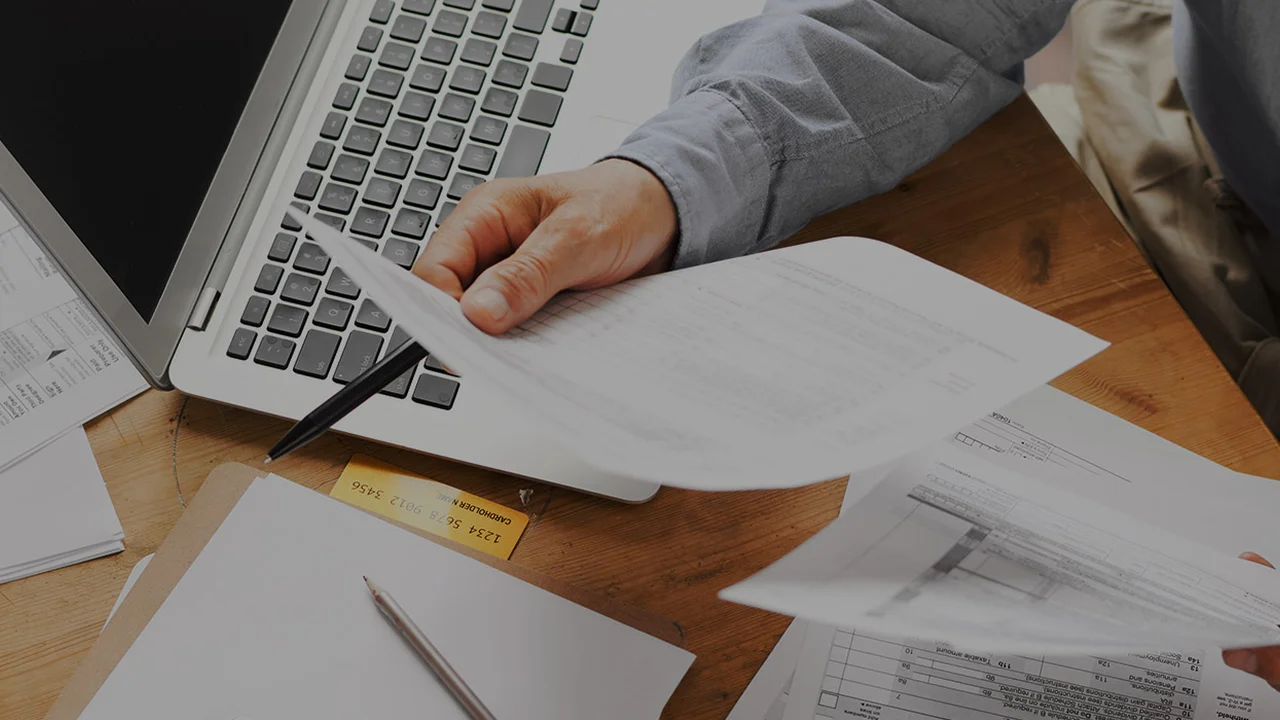Business Tax Debt vs Personal Tax Debt Key Differences
Learn the critical distinctions between business tax debt and personal tax debt and how they are handled by the IRS.

Learn the critical distinctions between business tax debt and personal tax debt and how they are handled by the IRS.
Business Tax Debt vs Personal Tax Debt Key Differences
Hey there! Navigating the world of taxes can be a real headache, especially when you're running a business. One of the most common areas of confusion, and frankly, a source of a lot of stress, is understanding the difference between business tax debt and personal tax debt. It might seem straightforward, but the IRS treats these two very differently, and knowing these distinctions can save you a ton of trouble, money, and sleepless nights. So, let's dive in and break down everything you need to know.
Understanding Personal Tax Debt What It Means for Individuals
First off, let's talk about personal tax debt. This is probably what most people think of when they hear 'tax debt.' It's the money you, as an individual, owe to the government. This typically arises from your personal income, investments, or other individual financial activities. Think about your annual income tax return (Form 1040 in the US). If you underpaid your estimated taxes throughout the year, or if you had unexpected income that wasn't properly withheld, you might end up with a personal tax debt.
Common scenarios leading to personal tax debt include:
- Underpayment of Estimated Taxes: If you're self-employed or have significant income not subject to withholding, you're usually required to pay estimated taxes quarterly. If you don't pay enough, you'll owe at tax time.
- Insufficient Withholding: For W-2 employees, if you don't adjust your W-4 form correctly, your employer might not withhold enough from your paycheck.
- Unexpected Income: Selling assets, winning the lottery (hey, it happens!), or receiving large bonuses can lead to a higher tax bill than anticipated.
- Audit Adjustments: The IRS might audit your personal return and find discrepancies, leading to additional taxes, penalties, and interest.
When you have personal tax debt, the IRS will typically send you notices. These notices can escalate from a simple bill to warnings about liens or levies. Your personal assets – like your home, car, bank accounts, and wages – are generally at risk if you don't address this debt. The good news is, there are various personal tax debt relief options available, such as Offer in Compromise (OIC), Installment Agreements, or Currently Not Collectible (CNC) status, depending on your financial situation.
Understanding Business Tax Debt What It Means for Companies
Now, let's shift gears to business tax debt. This is where things can get a bit more complex, especially for small business owners. Business tax debt refers to taxes owed by a business entity itself. This can include a variety of taxes, not just income tax.
Key types of business tax debt often include:
- Payroll Taxes: This is a big one and often the most problematic. Payroll taxes include federal income tax, Social Security, and Medicare taxes that an employer withholds from employee wages, plus the employer's share of Social Security and Medicare taxes, and federal unemployment tax (FUTA). These are considered 'trust fund taxes' because the employer is holding them in trust for the government.
- Business Income Tax: Depending on your business structure (C-Corp, S-Corp, Partnership, Sole Proprietorship), your business might owe income tax directly, or the income might pass through to your personal return.
- Sales Tax: If your business sells goods or services, you might be responsible for collecting and remitting sales tax to state and local governments.
- Excise Taxes: These are taxes on certain goods or services, like fuel, air transportation, or tanning services.
The critical distinction here, especially with payroll taxes, is the 'trust fund' aspect. If a business fails to pay over these withheld taxes, the IRS views it very seriously. Why? Because that money isn't the business's money; it belongs to the employees and the government. Failure to remit these can lead to the dreaded Trust Fund Recovery Penalty (TFRP), which can hold 'responsible persons' personally liable for the unpaid trust fund portion of the payroll taxes. This means even if your business is a corporation, which usually shields owners from personal liability, you could still be on the hook for payroll tax debt.
Key Differences in Liability and Collection for Tax Debt
This is where the rubber meets the road. The IRS's approach to collecting personal versus business tax debt can differ significantly, primarily due to liability.
Personal Liability vs Business Entity Liability Navigating the Legal Maze
For personal tax debt, you, as an individual, are directly liable. Your personal assets are fair game for IRS collection actions if you don't resolve the debt. This is pretty straightforward.
For business tax debt, it gets trickier. If your business is a sole proprietorship or a general partnership, there's no legal distinction between you and your business. So, any business tax debt is essentially your personal tax debt, and your personal assets are at risk. However, if your business is structured as a corporation (C-Corp or S-Corp) or a Limited Liability Company (LLC), the business is generally considered a separate legal entity. This means the business itself is liable for its debts, and your personal assets are usually protected from business creditors. BUT, and this is a huge 'but,' this protection often doesn't extend to payroll tax debt if you're deemed a 'responsible person' under the TFRP. A responsible person is typically someone who has the authority to direct the payment of the business's funds. This could be an owner, officer, or even an employee with significant financial control.
IRS Collection Actions How They Differ for Individuals and Businesses
The IRS has a range of collection tools at its disposal for both personal and business tax debt, but their application can vary:
- Liens: A federal tax lien is the government's legal claim against your property when you neglect or fail to pay a tax debt. For personal debt, it attaches to all your personal assets. For business debt, it attaches to business assets. However, if TFRP is assessed, a lien can also attach to the responsible person's personal assets.
- Levies: A levy is the actual seizure of your property to satisfy a tax debt. This can include bank account levies, wage garnishments (for personal debt), or seizing business assets like equipment, accounts receivable, or even the business itself.
- Payment Plans: Both individuals and businesses can typically enter into Installment Agreements with the IRS to pay off their debt over time.
- Offer in Compromise (OIC): An OIC allows certain taxpayers to resolve their tax liability with the IRS for a lower amount than what they originally owe. This is available for both personal and business tax debt, but the criteria and financial analysis will differ based on the entity.
The IRS often pursues payroll tax debt with more aggression due to its 'trust fund' nature. They want that money back because it was withheld from employees' paychecks and was never the business's to keep. This can lead to quicker and more severe collection actions against businesses and responsible individuals.
Specific Products and Services for Tax Debt Relief A Comparative Look
When you're facing tax debt, whether personal or business, you're not alone, and there are professionals and tools out there to help. Let's look at some specific products and services, comparing their utility for both personal and business tax debt scenarios.
Tax Debt Relief Companies and Professionals Who to Call
This is often the first step for many. Tax debt relief companies, tax attorneys, Enrolled Agents (EAs), and CPAs specialize in negotiating with the IRS on your behalf. They understand the complex tax codes and can help you navigate the various relief programs.
- Tax Attorneys: Best for complex cases, especially those involving legal disputes, audits, or potential criminal tax issues. They can represent you in tax court. Their fees are generally higher, often ranging from $200-$500+ per hour or flat fees for specific services.
- Enrolled Agents (EAs): Federally licensed tax practitioners who specialize in taxation and have unlimited practice rights before the IRS. They can represent taxpayers for audits, appeals, and collection issues. EAs are often a more cost-effective option than attorneys, with fees typically ranging from $100-$300 per hour or flat fees for specific services.
- CPAs (Certified Public Accountants): While many CPAs focus on tax preparation and financial planning, some specialize in tax debt resolution. They are excellent for understanding your financial situation and preparing necessary documentation. Their fees are comparable to EAs, often $150-$400 per hour.
- Tax Debt Relief Firms: These firms often employ a mix of attorneys, EAs, and CPAs. They can be a one-stop shop for various tax debt issues. Be cautious and research these firms thoroughly, as some have a bad reputation. Look for firms with good reviews, transparent pricing, and accreditation. Fees can vary widely, from a few thousand dollars for an OIC to ongoing monthly fees for payment plans.
Usage Scenario: If you're a small business owner facing a significant payroll tax debt and the IRS is threatening a TFRP, hiring a tax attorney or a reputable tax debt relief firm with attorneys on staff would be highly recommended. For a personal income tax debt that you can't pay, an EA or CPA might be sufficient to negotiate an Installment Agreement or OIC.
Tax Software for Compliance and Prevention A Proactive Approach
While not directly for debt relief, using good tax software can prevent future debt by ensuring accurate filing and helping you understand your obligations. This is crucial for both individuals and businesses.
- TurboTax: Excellent for personal tax filing, especially for W-2 employees and simple self-employment situations. It guides you through the process step-by-step. Prices range from free (for simple returns) to around $120+ for more complex personal returns, plus state filing fees.
- H&R Block: Similar to TurboTax, offering user-friendly interfaces for personal tax filing. They also have options for small business owners. Prices are comparable to TurboTax.
- QuickBooks Self-Employed: Specifically designed for freelancers and sole proprietors, it helps track income and expenses, estimate quarterly taxes, and simplify Schedule C filing. Subscription costs typically range from $15-$35 per month.
- QuickBooks Online (Plus/Advanced): For larger small businesses, this accounting software integrates with tax preparation, making it easier to track all business finances and generate reports needed for tax filing. Subscriptions range from $80-$200+ per month.
- TaxAct: A more budget-friendly option for both personal and business tax filing, offering good value for money. Prices range from free to around $90 for personal, and $100-$150 for business returns.
Usage Scenario: A freelancer in Southeast Asia with US tax obligations would benefit immensely from QuickBooks Self-Employed to manage their income and estimated taxes, preventing personal tax debt. A small business with employees would use QuickBooks Online to manage payroll and ensure proper withholding and remittance of payroll taxes, thus preventing business tax debt.
Financial Planning and Budgeting Tools Preventing Future Debt
Prevention is always better than cure. Good financial planning and budgeting tools can help both individuals and businesses avoid tax debt in the first place.
- Mint: A free personal finance app that helps you track spending, create budgets, and monitor your financial health. Great for individuals to ensure they have funds set aside for taxes.
- You Need A Budget (YNAB): A popular budgeting app that emphasizes giving every dollar a job. It's excellent for proactive tax planning, allowing you to allocate funds for estimated taxes. Subscription is around $14.99 per month or $99 per year.
- Wave Accounting: Offers free accounting software for small businesses, including invoicing, expense tracking, and basic reporting. This can help small businesses keep their books in order and prepare for tax season.
- Personal Capital (now Empower Personal Wealth): Offers free financial tracking tools and paid financial advisory services. It's great for high-net-worth individuals or those with complex investments to manage their overall financial picture, including tax implications.
Usage Scenario: An individual who consistently owes personal income tax could use YNAB to create a dedicated 'tax savings' category, ensuring they set aside enough money throughout the year. A new small business owner could start with Wave Accounting to meticulously track all business income and expenses, making tax time less stressful and reducing the risk of unexpected business tax debt.
The Trust Fund Recovery Penalty TFRP and Personal Liability
Let's circle back to the Trust Fund Recovery Penalty (TFRP) because it's such a critical aspect of business tax debt, particularly for payroll taxes. This penalty is the IRS's way of ensuring that the 'trust fund' portion of payroll taxes (the money withheld from employees' wages for federal income tax, Social Security, and Medicare) is paid over to the government. If a business fails to do this, the IRS can assess the TFRP against any 'responsible person' who willfully failed to collect, account for, or pay over these taxes.
Who is a Responsible Person Defining the Scope of Liability
A 'responsible person' isn't just the owner or CEO. It can be anyone with the authority and control over the business's finances, including:
- Officers or members of a corporation or LLC
- Directors or trustees
- Employees with significant financial decision-making power
- Even outside parties like bookkeepers or accountants if they have sufficient control over disbursements.
The key is 'willfulness,' which doesn't mean malicious intent. It simply means the responsible person knew the taxes were due and had the ability to pay them but chose to use the funds for other purposes (like paying other creditors or business expenses) instead of remitting them to the IRS. This is why payroll tax debt is so dangerous for business owners – it can pierce the corporate veil and make you personally liable.
Consequences of TFRP What Happens When You're Assessed
If you're assessed the TFRP, you become personally liable for the full amount of the unpaid trust fund taxes, plus penalties and interest. This means the IRS can pursue your personal assets – your home, car, bank accounts, wages – just as they would for personal income tax debt. This is a significant difference from other business debts where your personal assets might be protected by your business structure.
The IRS will typically send a Letter 1153, 'Proposed Assessment of Trust Fund Recovery Penalty,' giving you a chance to appeal before the penalty is formally assessed. This is a critical juncture where professional help from a tax attorney or EA is highly advisable.
Preventing Tax Debt A Proactive Approach for Both Individuals and Businesses
Given the headaches and financial strain tax debt can cause, prevention is truly the best strategy. Here are some proactive steps for both individuals and businesses:
For Individuals Smart Withholding and Estimated Payments
- Adjust Your W-4: If you're an employee, review and adjust your W-4 form regularly, especially after major life events (marriage, children, new job) to ensure the correct amount of tax is withheld.
- Pay Estimated Taxes: If you're self-employed or have significant income not subject to withholding, make sure you're paying estimated taxes quarterly. Use IRS Form 1040-ES to calculate and pay these.
- Build an Emergency Fund: Have savings specifically for unexpected tax bills.
- Keep Good Records: Organize all your income and expense documents throughout the year.
For Businesses Meticulous Payroll and Financial Management
- Prioritize Payroll Taxes: Always, always, always prioritize paying your payroll taxes. Set them aside in a separate account if necessary. They are not your business's operating capital.
- Use Reliable Payroll Software: Services like Gusto, ADP, or QuickBooks Payroll can automate payroll tax calculations, withholdings, and remittances, significantly reducing the risk of errors and missed payments. Gusto offers plans starting around $40/month + $6/employee. ADP and QuickBooks Payroll have similar pricing structures.
- Regularly Review Financials: Keep a close eye on your business's cash flow and profitability. If you see financial difficulties arising, address them immediately rather than letting tax obligations pile up.
- Consult with a CPA or Bookkeeper: Have a professional review your books regularly, especially if your business is growing or becoming more complex.
- Understand State and Local Taxes: Don't forget about state income tax, sales tax, and other local business taxes. These can also lead to significant debt if neglected.
When to Seek Professional Help Recognizing the Signs
Knowing when to call in the cavalry is crucial. Don't wait until the IRS is knocking on your door with a levy notice.
Signs You Need Help for Personal Tax Debt
- You've received multiple IRS notices and don't understand them.
- You owe more than you can reasonably pay within a year.
- You're facing an IRS audit.
- You're considering bankruptcy due to tax debt.
- You're overwhelmed and stressed by the situation.
Signs You Need Help for Business Tax Debt
- You're behind on payroll tax deposits.
- You've received a Letter 1153 (Proposed Assessment of Trust Fund Recovery Penalty).
- Your business is struggling financially, and you're considering using payroll tax money for other expenses.
- The IRS has placed a lien on your business assets or is threatening a levy.
- You're unsure about your business's tax obligations or compliance.
Whether it's personal or business tax debt, the key is to act quickly. The longer you wait, the more penalties and interest accrue, and the fewer options you might have. Understanding the fundamental differences between these two types of debt is your first step toward effective resolution and, more importantly, prevention. Stay informed, stay proactive, and don't hesitate to reach out to a qualified professional when you need help.
:max_bytes(150000):strip_icc()/277019-baked-pork-chops-with-cream-of-mushroom-soup-DDMFS-beauty-4x3-BG-7505-5762b731cf30447d9cbbbbbf387beafa.jpg)





